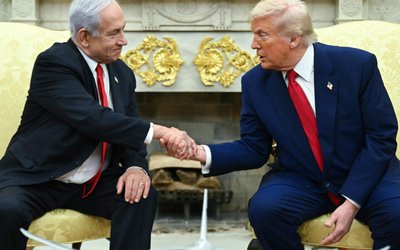More on Interview





At a time when Nepal has made significant achievements in the tourism sector over the last few years, Nepal is celebrating the World Tourism Day 2012 on September 27. ADITYA BARAL, Director, Nepal Tourism Board
Nepal annually celebrates the World Tourism Day as a ritual. How do you see the significance of this year's World Tourism Day to Nepal?
Every year World Tourism Day comes with a themed slogan inclusive of a social message in a tow. The reason behind celebrating the World Tourism Day is to make the people aware of the theme in vogue which circumspects our daily life and businesses. Ultimately, the thirst is to develop tourism through devising various events and programs, commemorating or corroborating the World Tourism Day. It looks like a ritual in view of the yearly phenomena, however, every year there are hordes of programs and events lined up either for awareness, or towards the sustainable development of tourism. Every year, there is a huge participation of individuals and institutions devising the new mechanism with improvisation in the programs. Thus, it is collaborative and consolidating efforts of national, regional and international partners. For us, as a member of WTO, World Tourism Day is an opportunity to tie up with international tourism fraternity with a common cause bringing all tourism related industries and people together under a common platform.
As Nepal has been selling the same product for quite a long time, doesn't Nepal have other products to sell?
Tourism, unlike manufacturing and commodities, cannot change the shape and size overnight. In order to change the products, many parts of Nepal have to undergo overhauling. For instance, how do we change Chitwan or Pokhara? As you said, yes, man-made creations can be changed but natural attractions are fixed by nature itself. However, the process of creating new destinations is moreover in the hands of private sector and they are driven by the profit. The government can simply help by formulating conducive policies and matching infrastructure. So the diversification process should be initiated by entrepreneurs more than any other sectors. The government or the NTB can't force or drag any tourists to visit any places of our interests without doing anything. Story telling for creating interest and turning it into sales is the responsibility of the destination sellers with the support from NTB. Apart from trekking, mountaineering or rafting, we have many things that have been recently introduced in the market. Zip drive in Pokhara, sky diving in the Everest, Canyoning and Abseiling in Bhote Koshi and Lamjung are a few tourism products that have been marketed internationally by private sector. NTB always backstops any innovatively created or crafted tourism products or services.
Despite more than six decade long experiences in tourism sector, large portion of rural area is yet to get the benefits of tourism or to make them rural friendly? We have to understand the fact that tourists go to the place that they feel safe, enjoy the serene beauty, and which are accessible, and extend tourism friendly accommodation with proper marketing and promotion back up. Nepal’s tourism is driven by the private sector because they are the one who invest, promote and sell the packages. So the private sector should work hand in glove with the local communities (village, district level) through the coordination of Board/government to get the best result in diverting tourists in the rural areas deprived of tourism activities. Initiation should emanate from entrepreneurs because they are genesis of value chain. Tourist first of all should be convinced while choosing the sites or products/services through the sellers by myriads of enticements. The role of others in between this value chain transaction remains meager. If villagers could show the profit, I guess investors would go to Mugu and reap the benefits. we have to acknowledge the fact that Business is driven by profit, it is the bottom-line doctrine.
The tourism arrival results show that the declining number of tourists from India and China affect Nepal's over all scenario. What does Nepal need to do to sustain the growth of tourists from both of neighbors?
In Nepal's context, tourist arrivals primarily depend on the political situation of the country; and the past arrival trends are the glaring examples to prove this fact. Promotion, publicity and marketing are the best tools to promote a destination but they will not work until the house remains in order to welcome them. Fine tuning the value chain is the integral part needed in overhauling our offers. We are gradually losing air component cost competitiveness from our tourism offers (after the tardiness of Nepal Airlines) to both the nations and the hegemony in price culture is rampant amongst the big. Chinese airlines have monopolized their price frame and are proving one of the most expensive sectors in short haul traveling. Thus, without our own extension of network either by the private or the government airlines, we have to stay in their mercy and satisfy ourselves with whatever is received at the receiving end. Avenues for our intervention are not there so far. So, we can only play within the demands created by the market forces. Our thrust and the playground available for creating demands are mismatched for the time being, at this juncture, there can be mere fluctuations in the numbers with our pro-active maneuvering, though the prospects may seem high.
As Nepal is now competing with Indian hill states like Sikkim, Darjeeling and Uttaranchal and Bhutan and Tibet Autonomous Region of China, what advantages does Nepal have compared to those countries to lure more tourists?
Nepal as a tourist destination has everything that these destinations don’t have like highest mountain in the world, picturesque Pokhara with lakes and peaks around, jungle safaris crowded with rhinos and tigers and Lumbini, the birth place of Lord Buddha. It is inevitable for tourists to come to Nepal to relish the best tourism products. They do have similar products but not the same; however, diversity that Nepal endows is perfectly unmatched. Hence, we should not be paranoid with their bountiful offers or destination competitiveness. Our status as a sovereign state, history, culture, nature or adventure is unparallel to any other destinations; therefore, one should not imbibe this particular threat perception ever.
Given Nepal's recent performance with high growth rate, how do you see the future prospect of tourism?
Well tourism is the mainstay of Nepal's economic activities. When most of the leading trades of Nepal have vanished from the market, this is the only trade acknowledged all over the world and within the country. It has embraced our daily life stretching from villages to urban areas. I guess it has unleashed immense potential and will remain so in the long run. Proper nurturing and expansion of this trade would help Nepal fructify its aim of balanced growth for maintaining our social mosaic and harmony. But the essence is, as in the past, we should maintain our decorum of traditional values of treating tourists as our guest. Once this value diminishes, no matter how much we pour in resources, tourists would shy away from this country.
How do you view the average stay of tourists in Nepal? How do you see spending of individual tourist in Nepal compared to other countries of this region?
According the statistics provided by the Ministry of Culture, Tourism and Civil Aviation, the average length of stay in Nepal is 13.12 and per day spending is US $ 38.2 in 2011. Nepal's tourism offers are concentrated around tourism triangle viz. Kathmandu, Chitwan and Pokhara, there is a rare space for diversion. Likewise, the top three trekking areas viz. Annapurna, Langtang and Everest are also running in saturation (too heavily crowded). Since there are not many areas and avenues where tourist can spend more, the per day spending in Nepal is comparatively lower than other countries. Also, due to our compulsion of squeezing the prices due to the escalating insurgency in the past, we have still not been able to revise our prices and this has been a bane to increase our revenue.
How do you see the air connectivity? Is it enough to bring a million tourists this year?
Nepal is now well connected to outside world by 31 international airlines. Though there is the capacity to bring more than one million tourists in Nepal by air itself, most of the air seats are now filled up by Nepalese traveling abroad and coming back home. However, with the operation of three new airlines this year, we are optimistic about bringing more tourists in this year. And the way new airlines are trying to come to Nepal, I guess we will have ample air space to fetch in 1 million tourists to Nepal.
In the changing context, how do you see the role of Nepal Tourism Board?
The role of NTB is ever increasing because the scope of tourism is correspondingly expanding. Today, what is not tourism? For instance, forest, river, rhino, elephant or people, are they not the products of tourism? In coming days, Nepal Tourism Board has to spread its tentacles throughout the country to reach amongst the deprived or marginalized sectors in order to rope in those communities left out from mainstream tourism industry. When the nation is in the process of transition to Federalism, NTB is morally bound to show its presence in all areas wherever deemed feasible. In this context, our national presence and international expansive responsibilities is paramount to drive the development efforts of Nepal's tourism.
How will political instability affect the tourism sector in Nepal?
Tourism flourishes in tranquility. It fructifies in those situations where tourists’ movement is not constricted by any internal or external factors. Imagine who would dare to go to war torn countries even if it's free. So it is obvious that political instability is the biggest hindrance for the smooth operation of tourism industry in Nepal.





